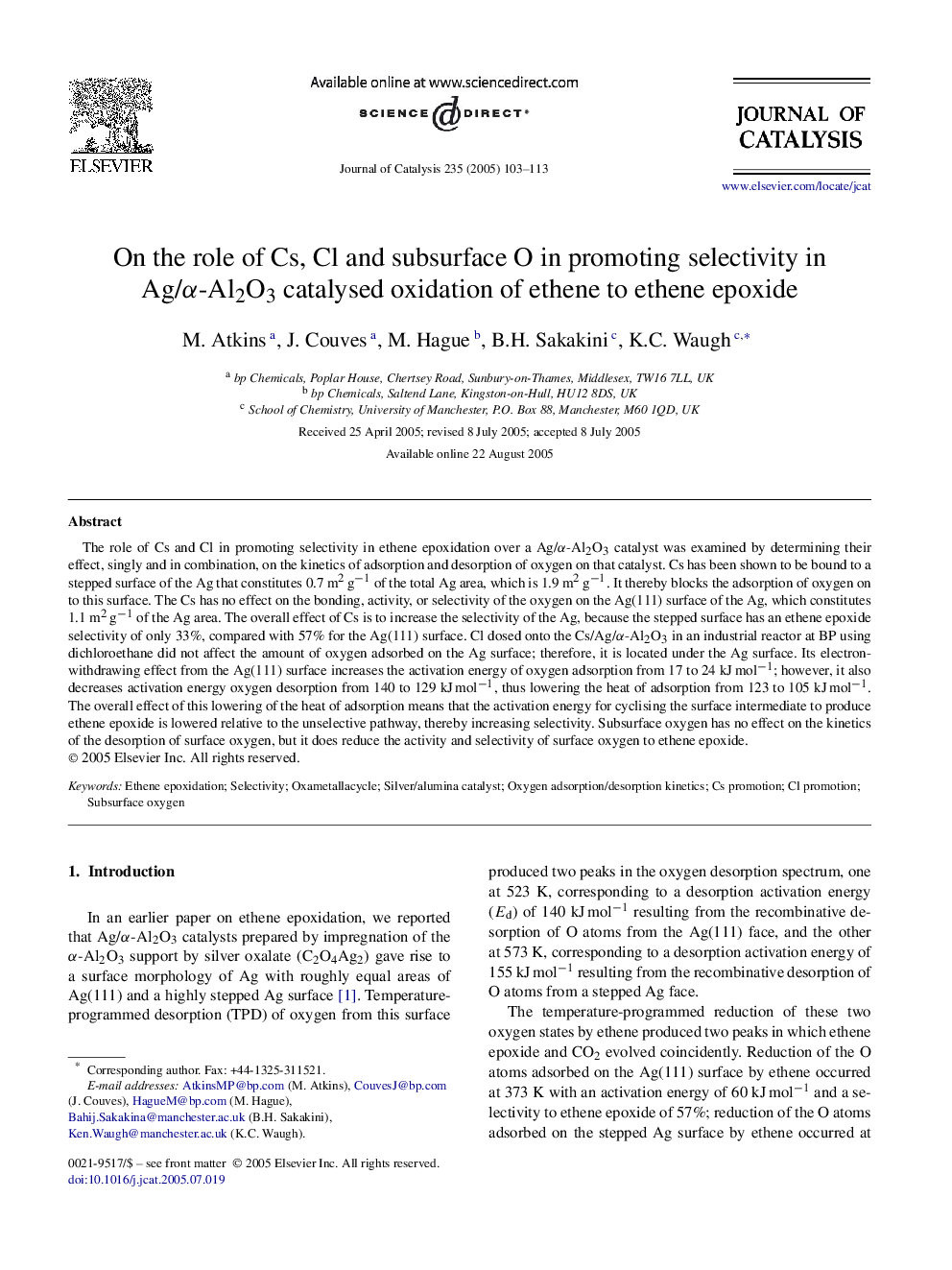| Article ID | Journal | Published Year | Pages | File Type |
|---|---|---|---|---|
| 10244559 | Journal of Catalysis | 2005 | 11 Pages |
Abstract
The role of Cs and Cl in promoting selectivity in ethene epoxidation over a Ag/α-Al2O3 catalyst was examined by determining their effect, singly and in combination, on the kinetics of adsorption and desorption of oxygen on that catalyst. Cs has been shown to be bound to a stepped surface of the Ag that constitutes 0.7 m2âgâ1 of the total Ag area, which is 1.9 m2âgâ1. It thereby blocks the adsorption of oxygen on to this surface. The Cs has no effect on the bonding, activity, or selectivity of the oxygen on the Ag(111) surface of the Ag, which constitutes 1.1 m2âgâ1 of the Ag area. The overall effect of Cs is to increase the selectivity of the Ag, because the stepped surface has an ethene epoxide selectivity of only 33%, compared with 57% for the Ag(111) surface. Cl dosed onto the Cs/Ag/α-Al2O3 in an industrial reactor at BP using dichloroethane did not affect the amount of oxygen adsorbed on the Ag surface; therefore, it is located under the Ag surface. Its electron-withdrawing effect from the Ag(111) surface increases the activation energy of oxygen adsorption from 17 to 24 kJâmolâ1; however, it also decreases activation energy oxygen desorption from 140 to 129 kJâmolâ1, thus lowering the heat of adsorption from 123 to 105 kJâmolâ1. The overall effect of this lowering of the heat of adsorption means that the activation energy for cyclising the surface intermediate to produce ethene epoxide is lowered relative to the unselective pathway, thereby increasing selectivity. Subsurface oxygen has no effect on the kinetics of the desorption of surface oxygen, but it does reduce the activity and selectivity of surface oxygen to ethene epoxide.
Related Topics
Physical Sciences and Engineering
Chemical Engineering
Catalysis
Authors
M. Atkins, J. Couves, M. Hague, B.H. Sakakini, K.C. Waugh,
